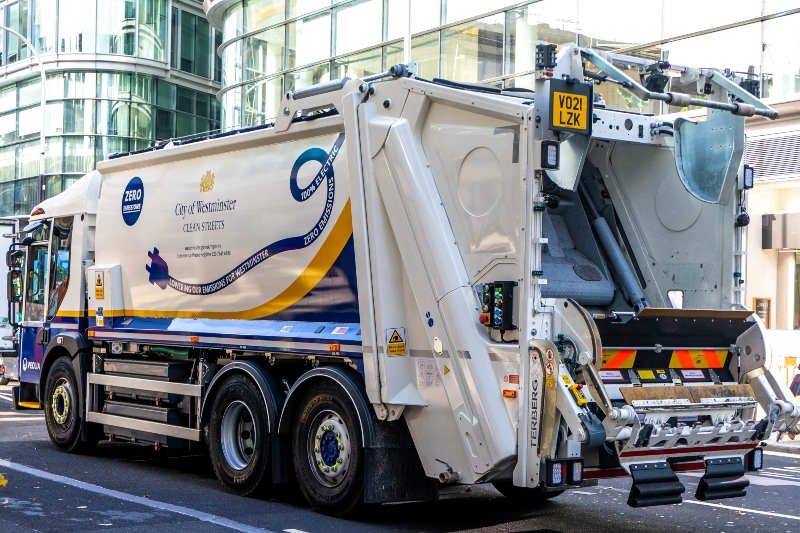Rob Bailey, APSE Principal Advisor, asks whether now is the time to consider electric refuse collection vehicles (eRCVs) for urban areas.


Recently, I was asked to look at the factors influencing the purchase of refuse collection vehicles (RCVs) at a time when electric vehicles are becoming more available and to determine whether there was an optimum place for them in the urban/rural split. The premise was that electric vehicles may have a smaller range and waste weight capacity and are therefore well suited to urban areas.
Typically, there are around 600 to 800 properties on a rural bin round and 1,000 to 1,200 on an urban. The most popular vehicle has a gross weight of 26 tonnes, with shorter chassis vehicles starting at 18 tonnes where accessibility is more important. The most common waste capacity for an RCV is about 12 tonnes.
Factors to consider include:
• The frequency of waste collections are often bi-weekly for recyclables and every three weeks for residual waste. The more frequent the collection, the less waste is collected and therefore fewer trips to the transfer station or tip site are required potentially allowing a longer round.
• For residual waste, the distance to the tip site will have substantial implications for the length of the round, which can be further complicated if there is a delay in accessing the tip and offload. Comfort breaks and statutory driver hours must also be considered.
• The availability of RCVs can vary substantially. Most diesel vehicles are based on the chassis of a regular logistics vehicle, built with standard parts and to scale whilst their electric counterparts are unlikely to have reached that point yet.
• Many roads are subject to weight restrictions and those in urban areas can be surprisingly low. The heavier the chassis and battery pack, the less weight left for the collection materials. So, the lighter the kerb weight of the RCV, the better. Whilst some exemptions can apply, bridges are not included.
So, after crunching all the numbers, is there a mathematical calculation that makes the decision clear? Well, unfortunately not.
You can get one or two electric vehicles which then require charging. Some electric refuse trucks can charge at high speeds up to 150 kW, allowing for a full charge in 2-3 hours. Typically, however, most vehicles use 50 to 80 kW chargers, and that’s more than sufficient to charge overnight. However, that’s the entire capacity of a typical industrial unit, so power supply is the determinant and until the electrical supply issue is overcome, electric RVCs will remain in a small minority.
Birmingham City Council recently purchased 151 new refuse, recycling, and food waste vehicles from Dennis Eagle to modernize its waste management operations and improve service reliability, with the new fleet arriving from March 2025 onwards. This is a bold investment by Birmingham and no doubt a major win for Dennis Eagle – however, there was not a single electric vehicle included in the purchase.
The simple fact is that RCVs are refreshed on a 7-year renewal cycle and the diesel vehicles available almost ‘off the shelf’ are highly reliable, with ease of access to fuel and parts. Put your neck above the parapet and predict the lifecycle and costs of an electric alternative and you add an element of risk. Cost wise, there is still a substantial gap, with electric RCVs at least 75% more expensive than the fossil-fuelled equivalent.
From early 2026, most councils will be required to make weekly food waste collections. This will inevitably require additional RCVs and provision for these is being made in many council budgets this year, often on the back of extended producer liability payments for packaging. Does this provide an opportunity to include smaller electric RCVs in the fleet?
So, for the time being, electric RCVs are proof of a council’s dedication to net-zero, clean air and a commitment to a greener future. However, financially and operationally, the case remains uncertain and APSE member councils will continue to look to the market to develop innovative, reliable, and cost-effective solutions.
Sign up here to receive our free weekly news bulletin and quarterly e-book.